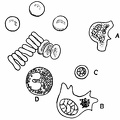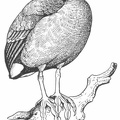907/1614
The tailed whip-scorpions, belonging to the family Thelyphonidæ, are represented in the United States by the giant whip-scorpion Mastigoproctus giganteus, which is common in Florida, Texas and some other parts of the South. In Florida, it is locally known as the "grampus" or "mule-killer" and is very greatly feared. There is no evidence that these fears have any foundation, and Dr. Marx states that there is neither a poison gland nor a pore in the claw of the chelicera.
- Author
- Handbook of Medical Entomology
By William Albert Riley and Oskar Augustus Johanssen
Published in 1915
Available from gutenberg.org - Posted on
- Tuesday 18 August 2020
- Dimensions
- 871*1200
- Albums
- Visits
- 884
- Downloads
- 54
 Download Photo
Download Photo





